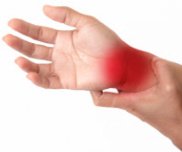The Relationship Between Fascia and Nerves
Nerves form a complex network throughout the body. Part of the neurological system, nerves create sensation and feeling in every part of the body.
As they travel through the body, nerves pass through muscles, alongside bone, through joint spaces, in the seams between muscles, and in and around organs. In all of these cases, nerves are wrapped in a protective coat of fascia, a form of connective tissue.
The role of fascia as it wraps nerves is to provide a fluid, moveable, and protective shield around the nerves. Under normal circumstances, nerves are supposed to be able to slide approximately 1 cm as the body moves. It is the fascial coat around the nerves that allows this to happen. If the fascial coat was missing, nerves would be abraded and irritated with every move.
It is the unique characteristics of fascia that leads to the development of nerve-related repetitive strain injury symptoms. Fascia responds to stress and strain in some unique ways. First, fascia has the ability to become tough and plastic-like. This leads to the sheath around nerves to become taut and less resilient. This inhibits the normal movement of the nerve through its pathway.
Secondly, fascia becomes sticky when it is subjected to stress and strain. This can cause the fascial sheath surrounding nerves to stick to nearby structures such as muscle tissue, bone, joints and skin. This means that the nerves become adhered in place and every time the body is moved, the nerve gets tugged as it tries to move through its normal pathway. This in turn leads to irritation of the nerve and over time, injury combined with nerve-related sensations results.
In order to recover from a repetitive strain injury that involves nerves, it is imperative that any adhesions that are affecting the nerve must be released. Because it is often hard to pinpoint the exact location of an adhesion which is affecting a nerve, it becomes necessary to release the entire pathway of the nerve so that the normal mobility of the nerve is restored.
This is best accomplished by gentle stretching exercises that coax the adhered areas that affect the nerves to release. In my experience, more benefit is derived when the exercises work at the origin of the nerves (nearest the center of the body) first, and then progress farther and farther out to the periphery of the body.
Sometimes, nerve adhesions can be resistant to release. If this is found to be the case, then stretching in a variety of directions around an adhesion can often be the key to getting the tissue to let go. This can be accomplished through a variety of stretches that all affect the same general area of the body and it can also be accomplished by adding small motions to the stretch, a gentle way to "nudge" the stuck tissue into letting go of its tethering.
In each of these cases, it is actually the fascia surrounding the nerve that is being stretched, as it is the element that actually forms the adhesion. If done correctly, the nerve will remain fairly unaffected by the stretching, the adhesion will release, and full function, motion, and sensory capacity of the nerve will be restored.
Click the block below that most closely matches your injury for more information and to find the Toolkit we offer to help you in your recovery.







